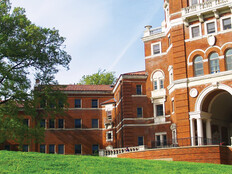Extreme Networks’ Cloud IQ integrates with Ekahau and Hamina Wireless to allow organizations such as schools to conduct wireless site surveys. With their dense deployment of Wi-Fi and the high-end devices in use, Bibona says, universities can be like a “mini Super Bowl” in terms of complexity.
“These tools tell us how far apart these APs have to be for coverage,” she says.
But not all wireless site surveys are the same. Depending on what a university currently has in place, what it’s looking to accomplish and what resources are available, one or more types of wireless site surveys could be effective.
Here’s a rundown of the three types of wireless site surveys and how to conduct them.
Differentiating the Three Types of Wireless Site Surveys
There are three types of wireless site surveys: passive, active and predictive.
1. Passive
Passive site surveys listen to APs and collect data on signal strength, noise interference and existing service set identifiers, Bibona explains. “It’s used for troubleshooting for poor coverage and interference and for planning new deployments.”
During passive site surveys, networking tools do not connect to APs or the network directly.
“You can listen in on how busy a particular channel seems to be in a particular location that you’re doing a site survey,” Reinalda says. “It's properly encrypted. You cannot see what is in those packets, but you can at least hear that there are packets, and you can frequently discern things from that.”
2. Active
While a passive network simply listens to a Wi-Fi network, the networking tool connects to the network during an active site survey.
“It measures performance metrics and packet loss and latency, and it uses other tools to simulate real traffic too,” Bibona says. It also analyzes radio-frequency characteristics and roaming behavior from classroom to classroom.
“Active surveys connect to the network and transmit data to the AP to verify throughput on top of signal strength,” Hollingsworth says. “This also helps measure interference or any other non-Wi-Fi radio sources.”
RELATED: Consider these design issues before upgrading to Wi-Fi 6E.
3. Predictive
Predictive surveys are the most common type of wireless site surveys and allow network operators to design network coverage and capacity backloads and determine where APs will be connected, Bibona says.
“Predictive surveys are not conducted onsite,” Hollingsworth says. “They use software to simulate AP coverage based on maps that account for construction materials. While they are a great first step to finding preliminary locations, a physical survey should be conducted to verify building materials and other interference sources.”
After conducting a predictive survey offsite, universities go onsite to do passive or active surveys to see how well a predictive survey worked, according to Bibona.
“Just giving them the power and the RF characteristics of the AP, they can predict where the placements of the AP and what the powers are for each of the clients,” she says.
The surveys look like heat maps, with red representing bad coverage, and white or yellow signifying low or moderate coverage.
While predictive surveys are done by modeling materials offsite, active and passive surveys are performed onsite with third-party tools and take longer, Bibona explains.
For universities, around 90% of site surveys are predictive, while 10% are a combination of active and passive, she says.
“They'll do predictive, and then they'll go onsite to see how well the clients roam and be able to actually test the RF conditions to see how well the predictive tools have done,” she says.












